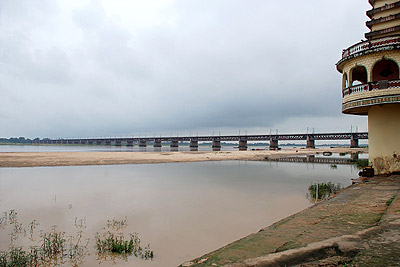 Quite a number of cities and towns have developed in the states of Indian subcontinent. The state of Bihar also is not an exception. Amongst several cities one makes a special mentioning of Koilwar. The alternative name of this city is Koelwar. It is the name of a residential locale, which is situated in the district of Bhojpur of the same state of India. Koilwar lies on the banks of River Sone. Koilwar town lies on the west banks of Son river and is also about 10 km east of Arrah , the district headquarter . There is a railroad bridge made up of steel. Being constructed before India`s Independence, it has becomes landmark of the Koilwar. So much so that this bridge was even pictured in the film Gandhi.
Quite a number of cities and towns have developed in the states of Indian subcontinent. The state of Bihar also is not an exception. Amongst several cities one makes a special mentioning of Koilwar. The alternative name of this city is Koelwar. It is the name of a residential locale, which is situated in the district of Bhojpur of the same state of India. Koilwar lies on the banks of River Sone. Koilwar town lies on the west banks of Son river and is also about 10 km east of Arrah , the district headquarter . There is a railroad bridge made up of steel. Being constructed before India`s Independence, it has becomes landmark of the Koilwar. So much so that this bridge was even pictured in the film Gandhi.
To be in track with the usual norm of India, data about Koilwar`s demography is a must for any one who is curious enough to identify various traits of this particular town. In this matter, a special mentioning may be made of the Census report that has been issued forth in the year 2001. As has been duly mentioned in the report, Koilwar marks a population count of 19,925. Interestingly few lines also have been penned down about the individual status of male and female populous of Koilwar. From this report, it is identified that male populace constitutes 61 %. However females who are residing in Koilwar is much less. In other words, 39 % constitutes the total female population of Koilwar. In Koilwar, children who are below six years of age constitute 19 % of the population.
Experts also have deciphered the current situation of literacy of Koilwar. Thus it has been noted that its average literacy rate constitutes 55 %. Thus it is even lower that that of the entire nation which constitutes 59.5 %. An interesting observation also has been by the experts. Unlike many other places in India the difference of male and female literacy rates of Koilwar is negligible. In other words, male literacy rate is 55 %, and female literacy is also 54 %.
Primary attractions are Ara Jain Temple and Aranya Devi Temple. From various places of India, multitudes of devotees make visits to these temples.
Access points of Koilwar are significant. Patna Airport lying almost 50 km east, serves the people of Koilwar. Koilwar Railway Station lies in close proximity. NH 30, which stretches from Bakhtiyarpur to Mohania, flows through this Koilwar town.



















